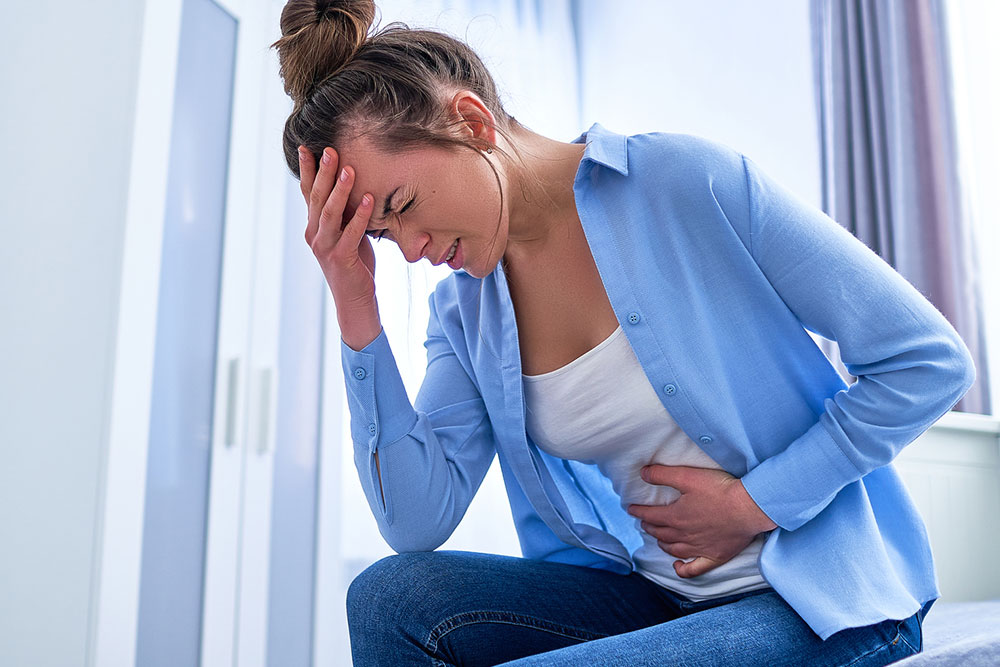9 possible reasons for period pain

Thousands of women in the country experience a common yet debilitating discomfort known as menstrual cramps or dysmenorrhea. While this monthly ordeal is often regarded as a rite of passage for women, it’s essential to understand the underlying causes of period pain. By delving into the reasons behind menstrual cramps, let’s shed light on this often-overlooked aspect of women’s health and explore strategies to manage and alleviate the pain.
Uterine contractions
The uterus, a muscular organ, contracts during menstruation to help shed the uterine lining. These contractions may cause cramping sensations in the lower abdomen, ranging from mild discomfort to severe pain. The intensity and duration of these contractions could vary from one woman to another, influencing the severity of menstrual cramps.
Prostaglandins
These hormone-like substances, play a pivotal role in regulating various physiological processes in the body, including inflammation and blood flow. During menstruation, the release of prostaglandins triggers more muscular uterine contractions, which might lead to more painful cramps. Additionally, high levels of prostaglandins could cause other symptoms like diarrhea and nausea.
Endometriosis
Endometriosis is a chronic condition in which tissue resembling the uterine lining grows outside of the uterus. Over time, the tissue might become inflamed, causing intense pain during their period. This condition may also lead to other complications, such as infertility, making it crucial to seek immediate expert attention for proper diagnosis and treatment.
Uterine fibroids
Uterine fibroids, non-cancerous growths in the uterus, can significantly exacerbate period pain and disrupt a woman’s menstrual cycle. These benign tumors, also known as leiomyomas, vary in size and location within the uterine wall, but their influence on menstruation is often distressing. Fibroids might increase period pain in several ways. Their presence may cause the uterus to contract more forcefully during menstruation, leading to intensified cramps and discomfort. Moreover, fibroids could disrupt the normal flow of menstrual blood, causing heavy and prolonged periods. This excessive bleeding may lead to anemia, further worsening fatigue.
Adenomyosis
Adenomyosis is a gynecological condition that affects the uterus, causing considerable discomfort for many women. It is characterized by the presence of tissue from the inner lining of the uterus (endometrium) infiltrating the muscular wall of the uterus (myometrium). This invasion results in an enlarged and tender uterus, leading to symptoms such as severe menstrual cramps, heavy bleeding, prolonged periods, and pelvic pain. The cause of adenomyosis is yet to be determined, but it often occurs in women who have given birth or are in their late 30s and 40s. It might be challenging to diagnose, as its symptoms overlap with other conditions like endometriosis or fibroids. Imaging studies such as ultrasound or MRI are often employed for accurate diagnosis. In severe cases where symptoms significantly affect a woman’s quality of life, doctors may recommend a hysterectomy, the surgical removal of the uterus.
IUDs and birth control
While many women experience relief from period cramps with the use of intrauterine devices (IUDs) and hormonal birth control, it’s important to acknowledge that these methods could have a negative impact on some individuals, potentially exacerbating menstrual pain. Hormonal IUDs, while often effective in reducing period pain, may cause unpredictable bleeding and irregular spotting during the initial months of use. This might lead to discomfort and inconvenience, which may be distressing for some users. Similarly, some women who use hormonal birth control methods like birth control prescriptions or hormonal implants may experience side effects like breakthrough bleeding, especially during the first few months of use. This irregular bleeding might be accompanied by cramping, adding to menstrual discomfort. Furthermore, while hormonal birth control could alleviate cramps for many women, it doesn’t work the same for everyone. Some individuals may find that their cramps persist or worsen with hormonal birth control use.
Cervical stenosis
Although primarily associated with fertility issues, cervical stenosis may also impact period pain and menstrual health. This condition occurs when the cervical canal narrows or becomes partially obstructed, potentially affecting the normal flow of menstrual blood and increasing discomfort during menstruation. The narrowing of the cervical canal may create a bottleneck effect, making it more challenging for menstrual blood to pass through. This obstruction could cause increased uterine pressure, leading to heightened period pain or dysmenorrhea. Women with cervical stenosis may experience more intense cramps and prolonged periods due to the slowed flow of menstrual blood.
Pelvic Inflammatory Disease (PID)
Pelvic Inflammatory Disease (PID) is a serious infection that affects the female reproductive organs, primarily the uterus, fallopian tubes, and ovaries. While PID’s primary symptoms include pelvic pain, fever, and abnormal vaginal discharge, its impact on period pain could also be significant. PID might lead to increased period pain and discomfort due to the inflammation and scarring it causes within the reproductive organs.
The infection may disrupt the normal hormonal and physiological processes of the menstrual cycle, resulting in irregular periods and intensified cramps. Additionally, inflammation and scarring could affect the proper functioning of the reproductive organs, potentially leading to conditions like chronic pelvic pain or infertility. Women experiencing persistent or severe period pain, especially when accompanied by other symptoms of PID, should seek immediate healthcare to prevent complications.
Stress and anxiety
Stress and anxiety could also significantly impact period pain, adding an emotional layer to the physical discomfort experienced by many women during menstruation. When a person is stressed or anxious, their body’s stress response triggers the release of stress hormones like cortisol, which may affect various bodily systems, including the reproductive system. Higher stress levels may lead to increased muscle tension and heightened sensitivity to pain, making menstrual cramps more intense and uncomfortable. Additionally, stress may disrupt hormonal balance and the regularity of menstrual cycles, potentially leading to irregular or heavier periods. Moreover, the mental health symptoms could exacerbate premenstrual syndrome (PMS) symptoms, including mood swings, irritability, and abdominal bloating, further intensifying the overall discomfort associated with menstruation.


